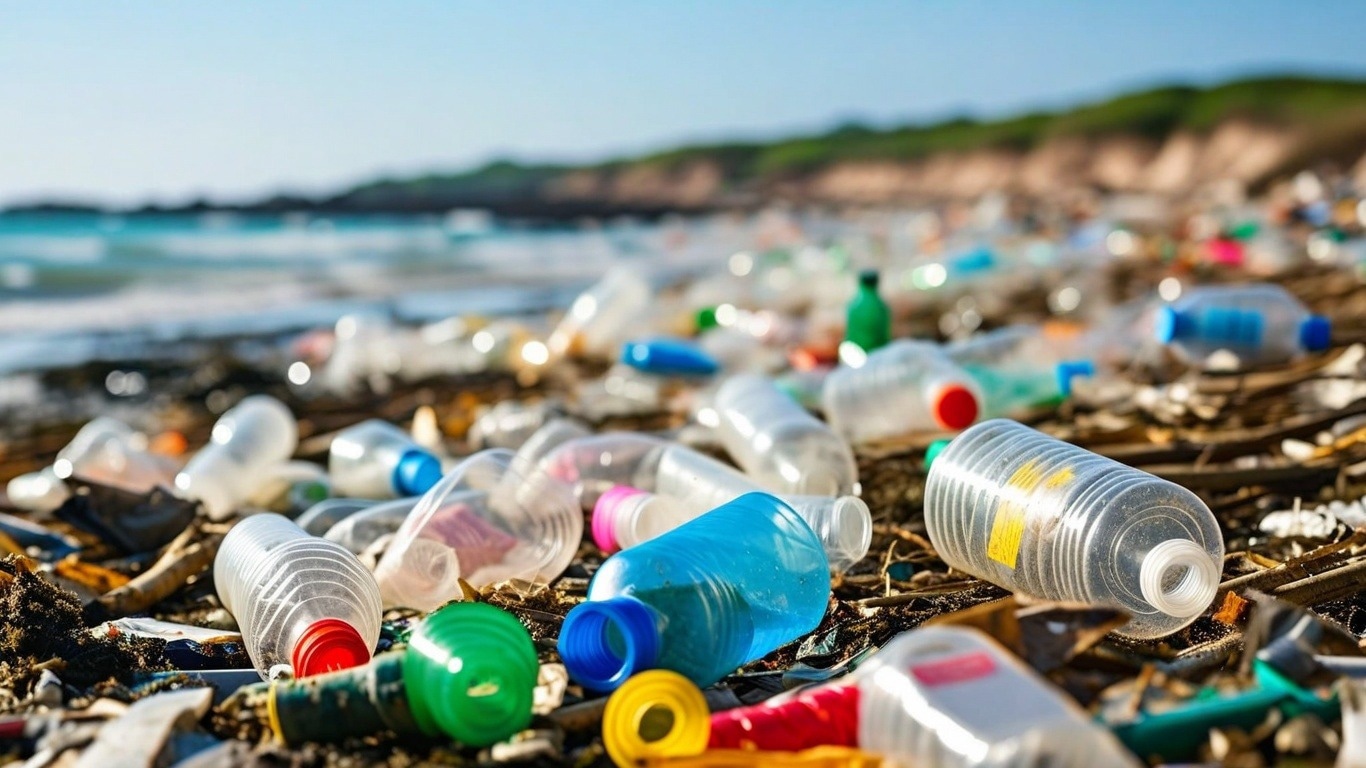A major study quantifies the global toll of plastic-derived phthalates on cardiovascular health, revealing that chemical exposure from everyday plastics may be silently fueling heart disease across developing regions.
 Study: Phthalate exposure from plastics and cardiovascular disease: global estimates of attributable mortality and years of life lost. Image Credit: Shutterstock AI Generator / Shutterstock.com
Study: Phthalate exposure from plastics and cardiovascular disease: global estimates of attributable mortality and years of life lost. Image Credit: Shutterstock AI Generator / Shutterstock.com
A recent study published in the journal eBioMedicine investigates phthalate-attributable cardiovascular mortality throughout the world.
What are phthalates?
Since 1960, deaths from CVD have declined by 60% following widespread efforts to address various risk factors such as obesity, high blood pressure, unhealthy diet, elevated cholesterol, air pollution, smoking, second-hand smoke exposure, and heavy metal exposure. Despite this decline, CVD remains a global health threat that leads to premature and preventable deaths.
In 2019, over 17 million deaths were caused by CVD, which could be attributed to an aging population, emerging environmental risks, and metabolic dysfunction. For example, increased exposure to plastic polymers and their chemical additives increases the risk of developing CVD.
Di-2-ethylhexyphthalate (DEHP) is a class of phthalates commonly used to soften polyvinyl chloride (PVC) plastics. Epidemiological and mechanism-based studies have established the role of phthalates, which have been characterized as antiandrogens and oxidative stressors, in adverse cardiovascular outcomes.
Exposure to phthalates and their chemical derivatives leads to increased expression of peroxisome-proliferator-activated receptors, which are crucial for lipid and carbohydrate metabolism. Previous studies have reported that exposure to these chemicals increases the risk of diabetes, atherosclerosis, weight gain, and CVD mortality.
Humans are exposed to micro- and nano-plastics (MNP) through several different routes. Moreover, one recent study revealed that MNPs can also accumulate phthalates and other chemicals, which may increase the risk of stroke, myocardial infarction, and death.
About the study
In February 2022, considering the adverse effects of plastic pollution, the United Nations Environment Assembly announced its plans to negotiate an internationally legally binding instrument to end plastic pollution.
To support these negotiations, the current study's researchers used existing data on phthalate exposure to develop a global disease burden model that estimates the country-specific burden of CVD mortality linked to DEHP. All countries recognized by the World Bank were considered for the analysis.
This study utilized the World Bank 2018 population data for individuals between 55 and 64 years of age. Cardiovascular mortality rates for each country were obtained from the Institute for Health Metrics and Evaluation (IHME).
Four DEHP metabolites including mono (2-ethyl-5-oxohexyl) phthalate (MEOHP), mono (2-ethylhexyl) phthalate (MEHP), mono (2-ethyl-5-carboxypentyl) phthalate (MECPP), and mono (2-ethyl-5-hydroxyhexyl) phthalate (MEHHP) were analyzed. A mixed-effects regression model evaluated phthalate metabolite concentrations over time.
Study findings
A total of 356,238 deaths due to DEHP exposure were recorded, 98% of which were attributed to plastics. Approximately 13.4% of all CVD deaths worldwide in 2018 were attributed to MEHP, MEHHP, MEOHP, and MECPP exposure.
Sensitivity analyses highlighted the range of DEHP-attributable mortality to be between 356,238 and 356,602 deaths. Comparatively, between 349,113 and 349,469 deaths were attributed to plastic production, consumption, and waste in 2008.
Data from 2018 indicated a high variance in DEHP exposure throughout different world regions. Therefore, the effects of DEHP metabolite exposures on CVD outcomes were disproportionately experienced by countries in the Pacific, East Asia, South Asia, and the Middle East.
Compared to other countries, Middle Eastern and South Asian countries reported higher exposure to DEHP metabolites, particularly MEHP and MEHHP, at a mean concentration of 19.460 μmol/L and 46.107 μmol/L, respectively. Comparatively, Europe experienced the lowest DEHP exposure, with MEHP and MEHHP concentrations of 3.243 μmol/L and 18.413 μmol/L, respectively.
The highest disparity in exposure among different percentiles of the population was observed in Africa and the United States. For example, the highest MECPP concentration of 65.452 μmol/L was reported in African regions.
Approximately 73.1% of all global deaths from DEHP in 2018 occurred in Asia. South Asia and the Middle East experienced the highest mortality due to CVD attributed to DEHP exposure, followed by Latin America, East Asia, the Pacific, Canada, Australia, and Africa.
Conclusions
Phthalate exposure varied significantly between world regions; however, this plastic contaminant was found ubiquitously and contributed to CVD mortality in every region.
Overall, the highest exposure burden of all four DEHP metabolites was reported in the Middle East, South Asia, and Africa, whereas Europe had the lowest exposure levels. Compared to high-income countries, low—and middle-income countries experience higher DEHP-attributed CV deaths.
These findings underscore the critical need for enhanced regulatory measures and international cooperation to mitigate the health impacts of phthalates, particularly in regions characterized by high levels of industrialization and plastic consumption.”
Journal reference:
- Hyman, S., Acevedo, J., Giannarelli, C., et al. (2025) Phthalate exposure from plastics and cardiovascular disease: global estimates of attributable mortality and years life lost. eBioMedicine. doi:10.1016/j.ebiom.2025.105730